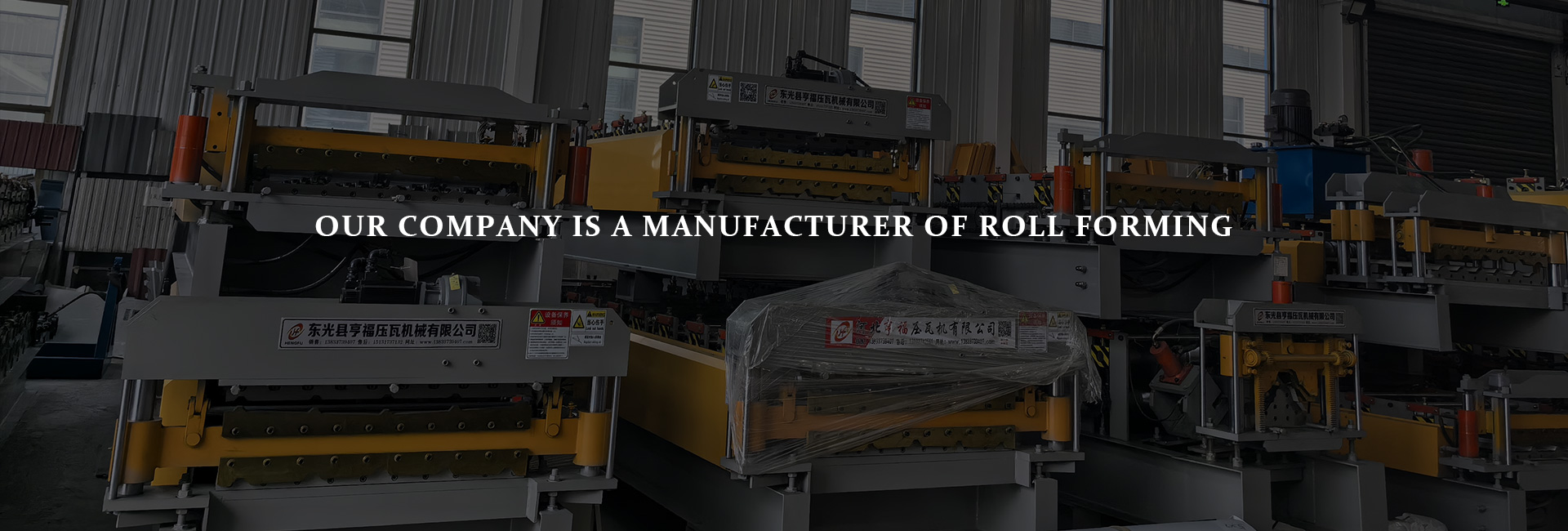The glazed roll forming is an essential piece of equipment in modern construction, primarily used to produce high-quality glazed tiles for roofing and decorative purposes. Glazed tiles are popular in the construction industry due to their aesthetic appeal, durability, and waterproof properties. This article provides a detailed overview of the working principles and operation guide for a glazed roll forming, helping users achieve more efficient and safe production.
1. Working Principles of Glazed Roll Forming
The glazed roll forming uses metal sheets, which are shaped into specific curved and patterned glazed tiles through a roll-forming process. The machine's working principles can be summarized in the following steps:
1. Material Feeding: The automatic feeding system delivers metal sheets, such as galvanized or color-coated steel sheets, into the machine. This process requires no manual intervention, ensuring continuous and stable production.
2. Roll Forming: The metal sheets pass through multiple forming rollers, gradually shaping them into glazed tiles. The forming rollers are precisely designed to ensure consistent tile curvature and patterns with high accuracy.
3. Embossing Process: During the forming process, the machine can emboss patterns onto the surface of the tiles, enhancing their decorative appeal and texture.
4. Cutting: After the tile is formed and embossed, the press uses an automatic cutting system to cut the tiles to the specified length, ensuring precise cuts and uniform size.
5. Finished Product Output: The cut tiles are conveyed to the output area for stacking, where they are prepared for packaging or transportation to construction sites.
2. Operation Guide for Glazed Roll Forming
To ensure the safe and efficient operation of the glazed roll forming, operators must follow a set of operational procedures. Below is a detailed operation guide to help users manage the equipment effectively.
1. Pre-Start Inspection
Power System Check: Ensure that the power connection is correct and that the voltage is stable to prevent equipment damage due to fluctuations.
Lubrication Check: Inspect the lubrication of the rollers and moving parts. Apply oil where necessary to reduce friction and prolong the machine's lifespan.
Material Preparation: Check that the metal sheets to be used meet the machine's specifications and verify that they are free of deformation or damage.
Safety Device Check: Make sure that all safety guards are in place and functioning properly to prevent accidents during operation.
2. Operation Steps
Start the Machine: Follow the startup procedure by powering on the machine, control system, and feeding system. Ensure that all components are running smoothly.
Set Parameters: Use the control panel to set the tile length, tile shape, and embossing patterns to meet project specifications.
Material Feeding: Place the prepared metal sheet onto the feeding platform and start the automatic feeding system to feed the sheet into the forming area.
Monitor the Production Process: During production, operators should monitor the machine to ensure that the forming and embossing processes are running smoothly and that the cutting length is accurate.
Complete Production: Once the production target is reached, shut down the machine, and inspect the finished products for quality before stacking.
3. Maintenance and Care
Daily Cleaning: After production, clean the machine thoroughly, especially the forming rollers, to remove any debris that might affect the accuracy of future production.
Regular Inspections: Regularly check the rollers, cutting system, and electrical components for any issues, and replace or repair worn-out parts as needed to maintain the machine's efficiency.
Lubrication Maintenance: Weekly lubrication of key components is recommended to ensure smooth operation and extend the machine's service life.
3. Advantages of the Glazed Roll Forming
High Production Efficiency: The glazed roll forming can rapidly and continuously produce high-quality tiles, significantly improving production efficiency and reducing labor costs.
Easy to Operate: Modern glazed roll forming are equipped with automated control systems, making them easy to operate with minimal manual intervention.
High Precision: The machine’s precise design ensures consistent tile sizes, curvature, and patterns, minimizing product defects and the need for rework.
Durability: The press is constructed from high-quality materials, allowing it to withstand long hours of high-intensity production and ensuring a long service life.
Conclusion
The glazed roll forming, with its high production efficiency and precise forming technology, plays a crucial role in the construction industry. By understanding its working principles and following proper operational procedures, users can fully utilize the machine's potential to produce high-quality glazed tiles. Regular maintenance and care will further extend the machine's service life, ensuring it remains in optimal condition for future use.







